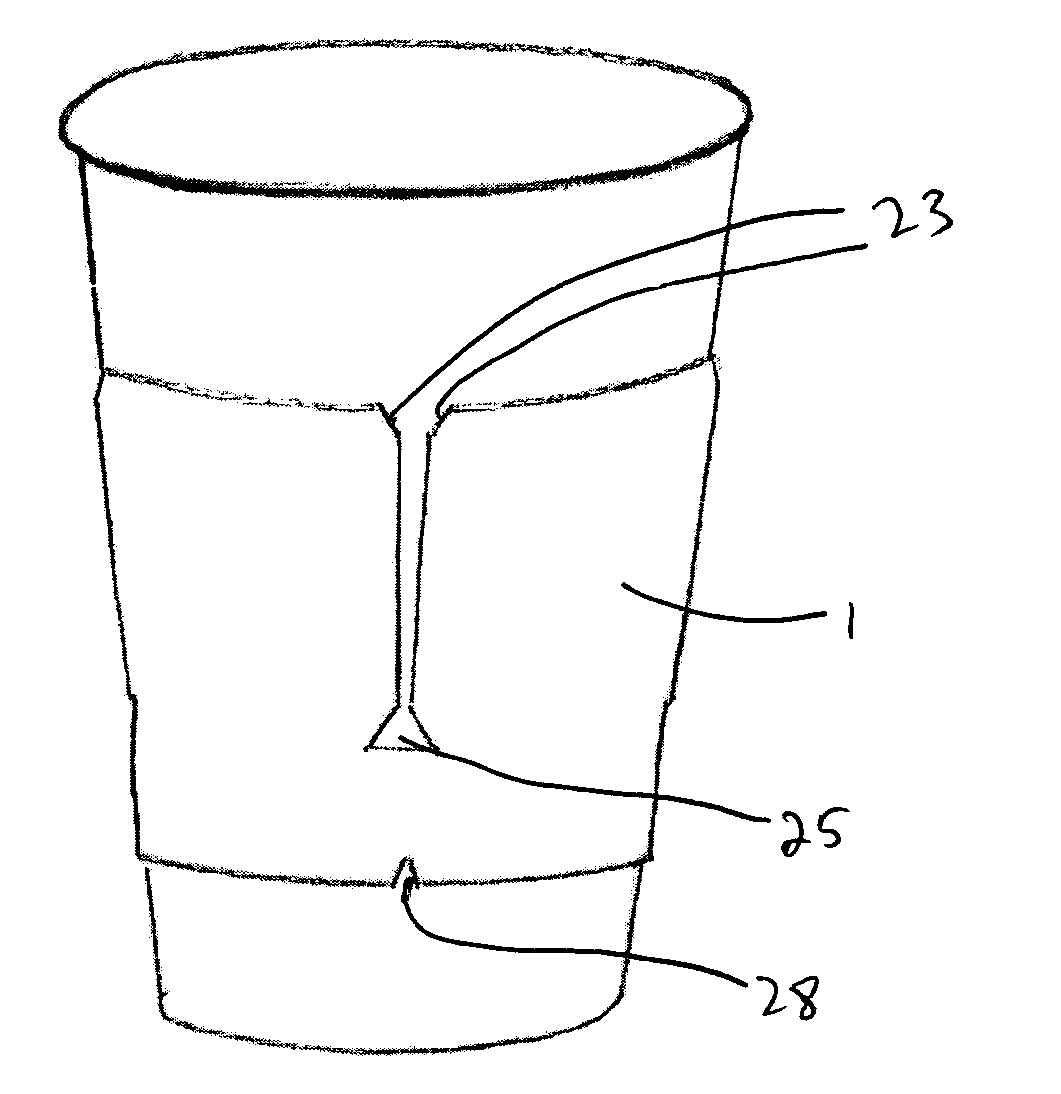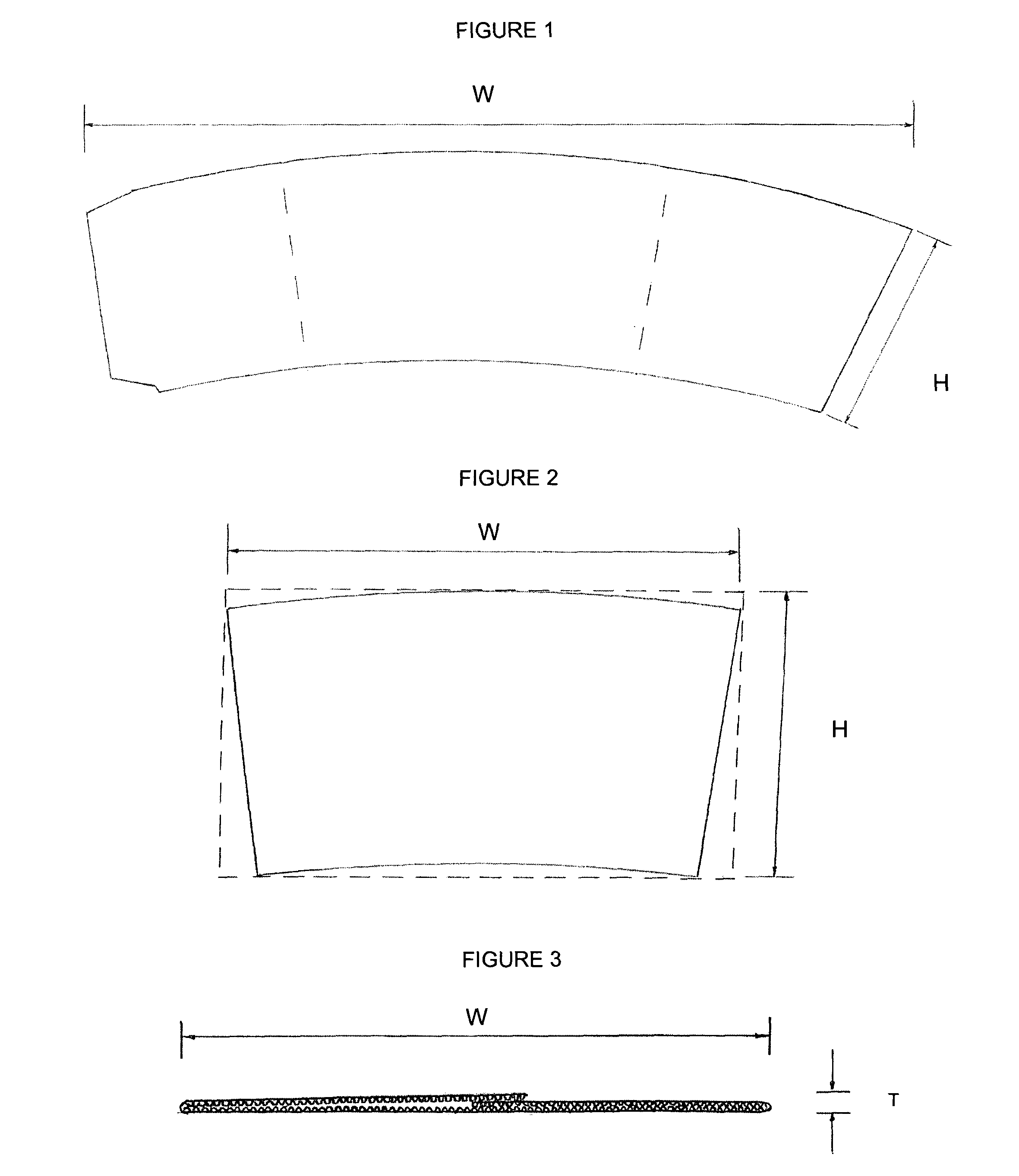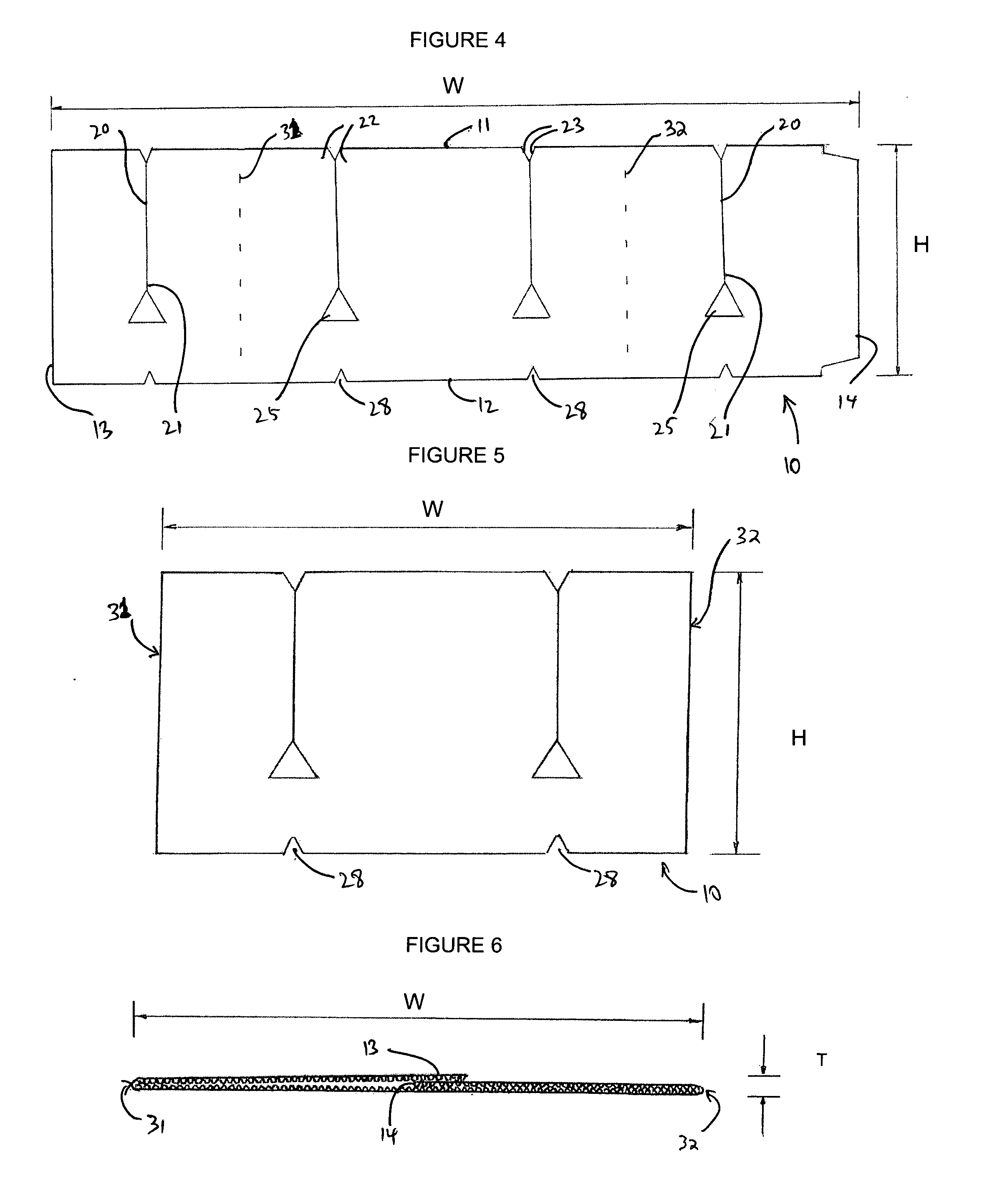Insulating sleeve
a technology of insulation sleeves and sleeves, applied in the field of sleeves, can solve the problems of poor thermal insulation, inconvenient storage and transportation, and inability to easily recycle or biodegradable, and achieve the effects of convenient storage and transportation, convenient use of storage and transportation space, and convenient stacking
- Summary
- Abstract
- Description
- Claims
- Application Information
AI Technical Summary
Benefits of technology
Problems solved by technology
Method used
Image
Examples
Embodiment Construction
[0032] The present invention provides an insulating cup sleeve, as shown in FIGS. 4-9V. As described below, FIG. 4 depicts a first embodiment of a blank or band in a flattened and open shape, which is then formed into a flattened and folded shape as shown in FIGS. 5 and 6 for storage and shipping, and then formed into an annular shape and mounted about a cup, as depicted in FIGS. 7 and 8. Alternative embodiments of the insulating cup sleeve are depicted in FIGS. 9A-9V.
[0033] As shown in FIGS. 4-7, an insulating sleeve 1 made in accordance with the present invention is formed from an elongated blank or band 10. Blank 10 is constituted of a paper material, preferably corrugated board, paperboard or heavy weight paper, such as cardboard, so as to render the insulating sleeve rigid, for example to be able to support a cup filled with a beverage, and so that the insulating sleeve is reusable and recyclable. Single- or double-face corrugated paper having one or two liners adhered to one ...
PUM
 Login to View More
Login to View More Abstract
Description
Claims
Application Information
 Login to View More
Login to View More - R&D
- Intellectual Property
- Life Sciences
- Materials
- Tech Scout
- Unparalleled Data Quality
- Higher Quality Content
- 60% Fewer Hallucinations
Browse by: Latest US Patents, China's latest patents, Technical Efficacy Thesaurus, Application Domain, Technology Topic, Popular Technical Reports.
© 2025 PatSnap. All rights reserved.Legal|Privacy policy|Modern Slavery Act Transparency Statement|Sitemap|About US| Contact US: help@patsnap.com



